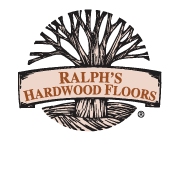 The hardwood floor finishes on the market today are “not your grandfather’s,” as the saying goes.
The hardwood floor finishes on the market today are “not your grandfather’s,” as the saying goes.
I’ve been working at Ralph’s Hardwoods since I was a young boy. My father actually started the company the year I was born, 1965, so it’s always been a part of my life, and I’ve been the company’s president for over 20 years.
Therefore, I know from personal experience that the finishes and finishing techniques available today have come a long way from what existed when I first started working with Dad. Advancements have enabled us to produce floors that are both more beautiful and more durable.
Hardwood Floor Finishes Through the Centuries
Before I get to that relatively recent progress, I’d like to share just a bit of the long history of hardwood finishes with you. A lot of advancement occurred before my time—but not really all that long ago considering that hardwood floors first began to be used in homes in the 1600s.
For several centuries, up until the late 1800s, you typically only found them in the homes of the very wealthy, and they were usually intricate, hand-crafted parquet. The only hardwood flooring you could find in the homes of ordinary people was made of roughly cut, unfinished planks that were simply laid down side by side.
Then with the development of tongue-and-groove “side matchers” to attach planks together, along with advancement in milling techniques to lower costs, hardwood flooring began to have mass appeal. And people began using wax to protect them and make them shine. These wax finishes were hard to maintain—more wax had to be applied every six months or so, and any water on the floor would cause it to spot—but that was the best option at the time.
With the introduction of the electric portable wood sander in the 1920s, hardwood flooring popularity again grew. However, it wasn’t until polyurethane finishes were developed in the 1920s that they really took off.
The Latest Developments
When polyurethane first began to be used, it was oil-based. Today, you can still find oil-based polyurethane—it remains fairly popular, and we still can use it to create gorgeous floors for our customers.
However, the development of water-based polyurethane has made it a more popular choice. Relative to oil-based polyurethane, water-based is more durable, holds its color better, and has a low level of volatile organic compounds (VOCs). It also dries faster and has relatively little odor when applied.
Our most popular finish is another modern technique—the Swedish finish, in which the floor is cured by chemical processes. A Swedish finish has a deeper, richer color than polyurethane finishes and is resistant to developing amber tones over time (as oil-based does) or lightening over time (as water-based can do—sometimes with cool effects, sometimes not).
In terms of durability, a Swedish finish is superior to oil-based polyurethane and comparable to higher-end water-based finishes.
Which finishing option is right for you? It all depends on your situation. At Ralph’s, we work with homeowners to decide on the right finishing option for the color they have chosen and the lifestyle they live.
An Old Finish That’s New Again
One of the recent trends in hardwood floor finishes makes me chuckle. That’s because I’m talking about natural oil finishes, which have been around since long before polyurethane. What’s changed is that better natural oils for hardwood floors have been developed.
Unlike the natural oil finishes of the past, which required buffing, today’s natural oil finishes can simply be squirted on the flooring and rubbed in. As the oil dries, it hardens. This ease of self-maintenance makes natural oil finishes an appealing choice for many. Natural oils’ lack of VOCs, as well as the unique looks the oils can create, are other factors contributing to the growing popularity of this type of finish.
Takeaway
The evolution of hardwood floor finishing has progressed so that homeowners today can get finishes that are more beautiful, durable, and eco-friendly than the finishes used just a few decades ago. We use them all because there is no one perfect finish for each situation.















